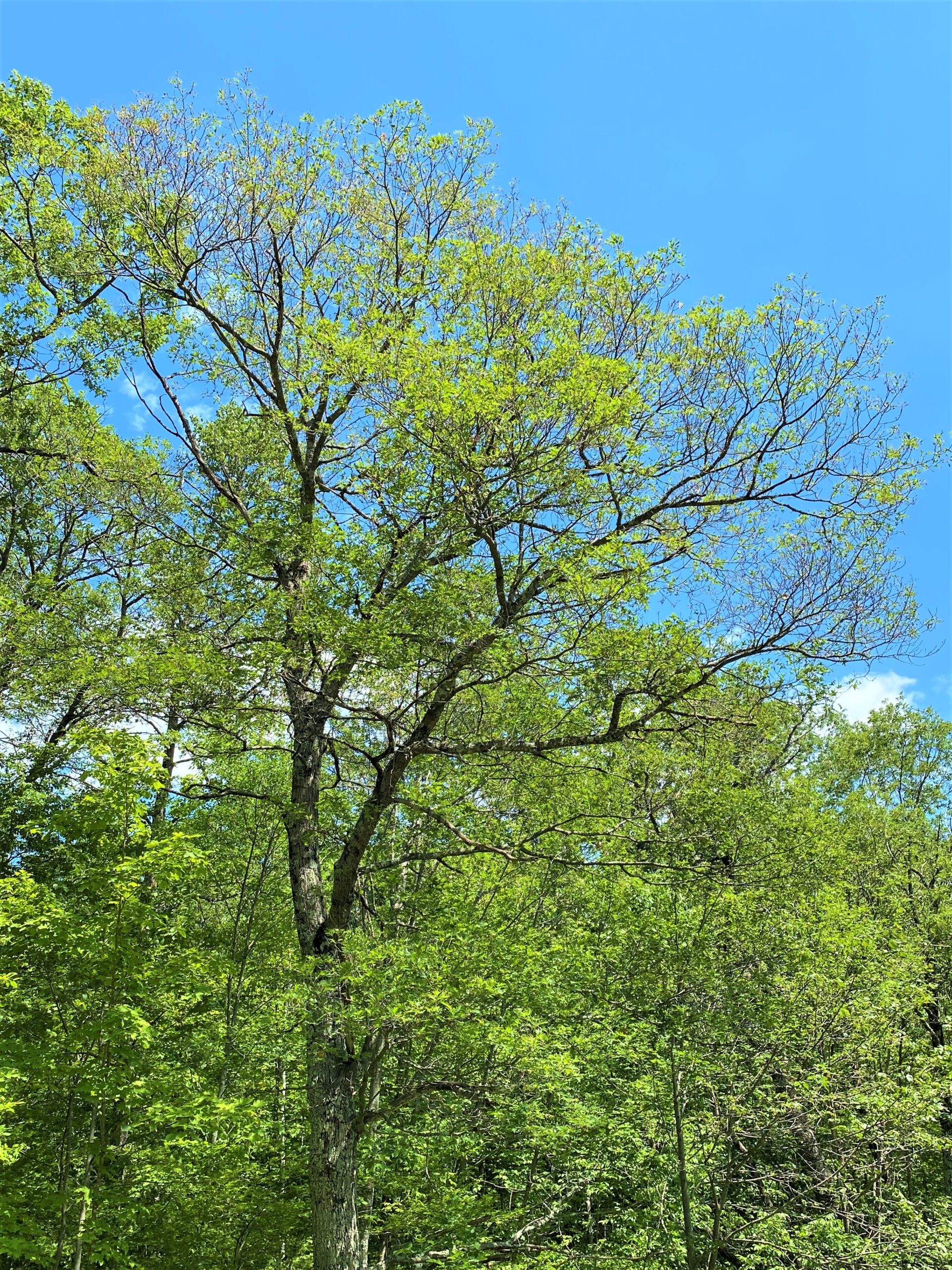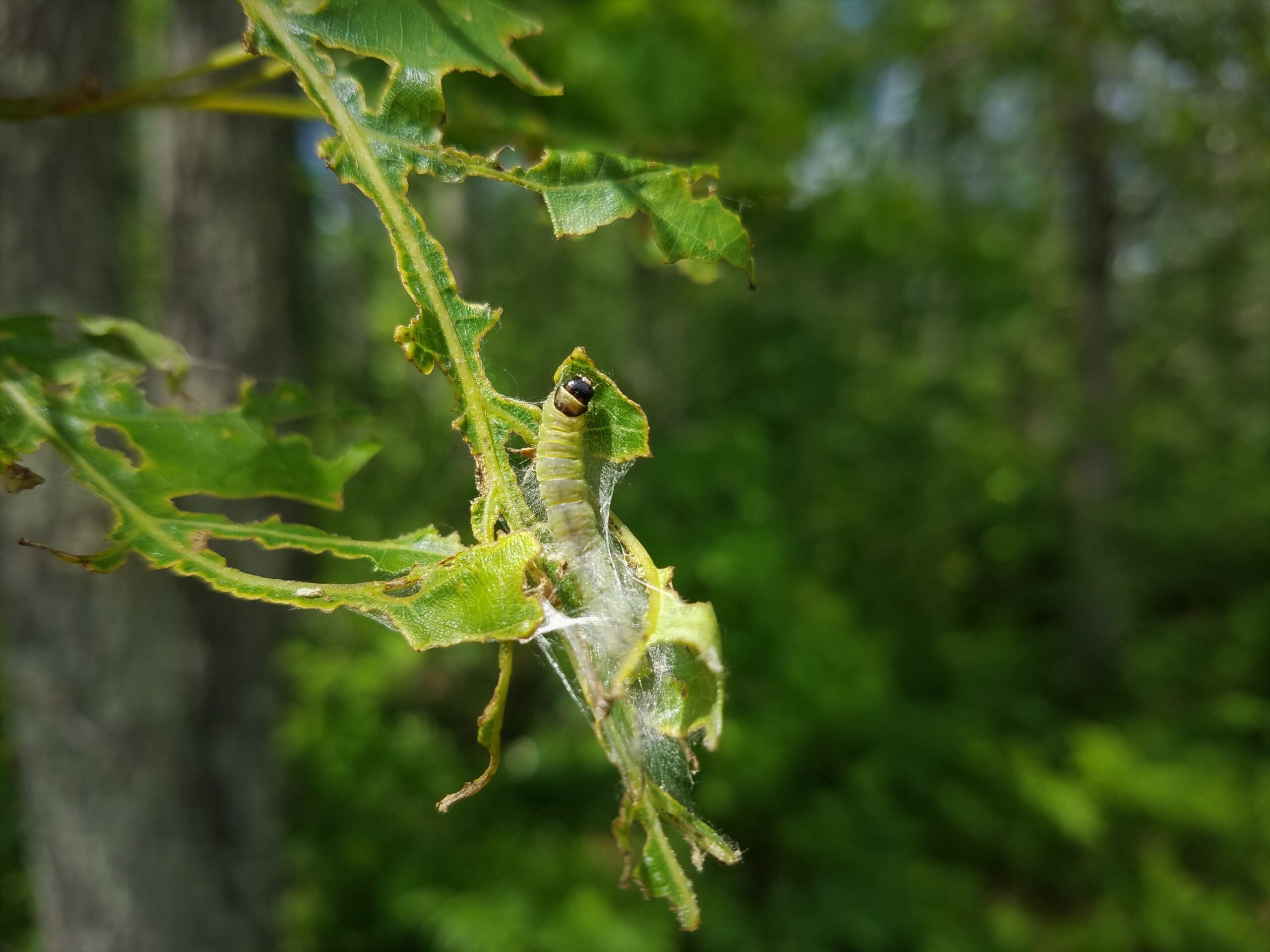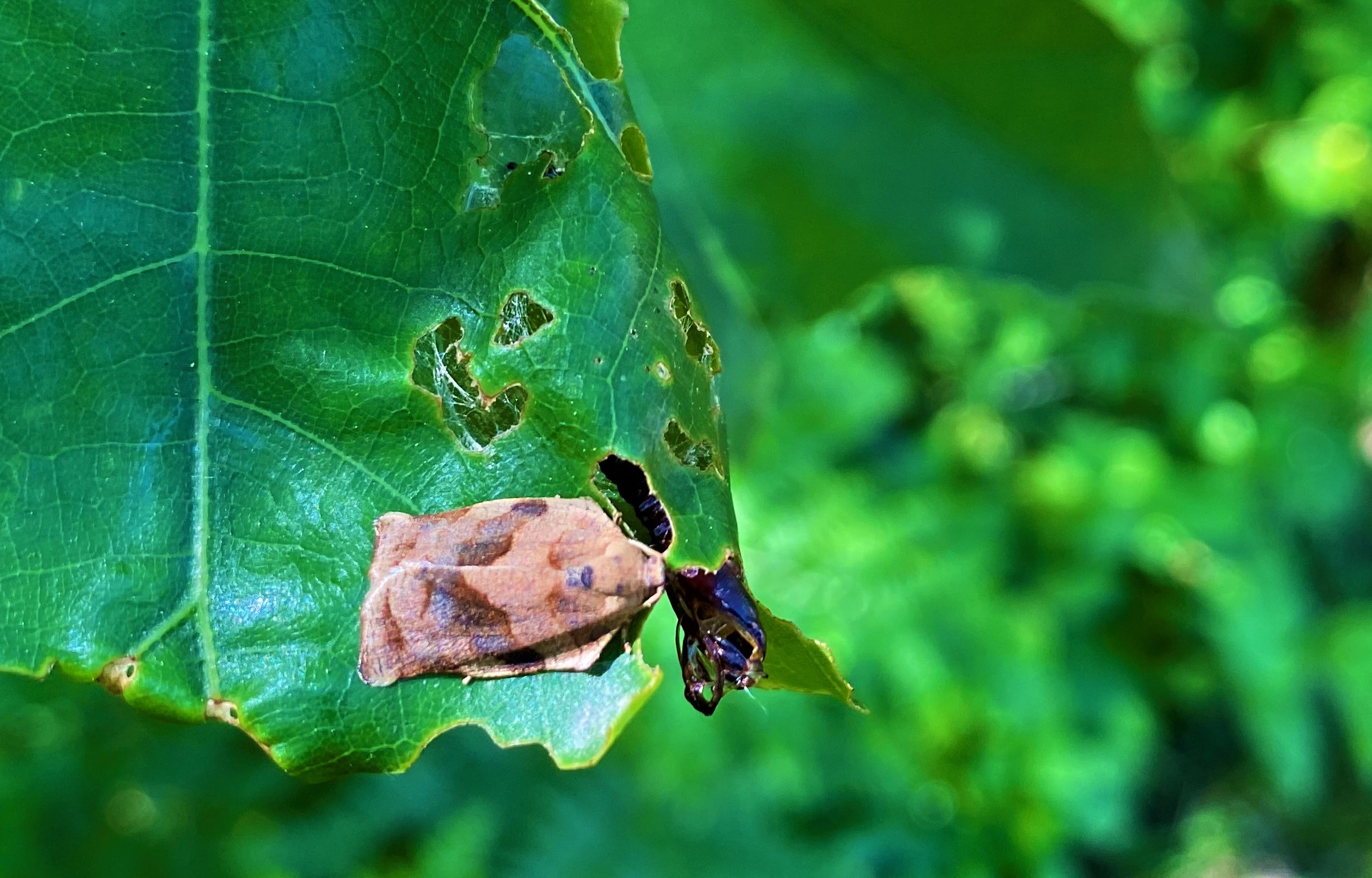By Paul Cigan, DNR Forest Health Specialist, Hayward, Paul.Cigan@wisconsin.gov or 715-416-4920; Mike Hillstrom, DNR Forest Health Specialist, Fitchburg, Michael.Hillstrom@wisconsin.gov or 608-513-7690; and Linda Williams, DNR Forest Health Specialist, Woodruff, Linda.Williams@wisconsin.gov or 920-360-0665
An outbreak of oak leafroller moth, Archips semiferanus, has been observed in many parts of Wisconsin this year. Oak leafrollers are native, early-season defoliators. This year they have consumed and rolled up oak leaves, giving the tree crowns a thin, yellow appearance.

Oak leafroller has defoliated oaks in several counties, leaving crowns looking tattered, thin and yellow green. Photo: Wisconsin DNR
In several northwestern counties, some trees have suffered over 75% leaf loss, but most have escaped heavy defoliation. Over 16,000 acres of severe defoliation were mapped in Marinette County. About 25% defoliation was noted in Forest, Marathon, Oneida, Vilas and Waupaca counties, and the U.S. Forest Service has observed areas of severe damage in northern Oconto County.
In southern Wisconsin, 50-100% defoliation was mapped at Blue Mound State Park. Both spongy moth* (formerly known as gypsy moth) and oak leafroller were reported defoliating oaks at a campground in Columbia County as well. Given the widespread reports of defoliation by this insect, damage likely occurred elsewhere in the state.
Looking closely at affected leaves reveals feeding damage and rolled up leaves bound by silken threads, which often conceal a feeding caterpillar or developing pupa inside. Caterpillars can occasionally be seen dangling from twigs by a silken thread.
Pupation has occurred in most areas with many moths now in flight, ending further defoliation this season. Leaves are beginning to re-flush from defoliated twigs, and crowns should become fuller in the next few weeks.

Oak leafroller caterpillars (larvae) feed in the spring on swelling buds and expanding leaves while concealed from predators in their rolled and silk-tied leaves, where they eventually pupate to moths. Photo: Wisconsin DNR
However, there is an energetic cost to regrowing leaves after spring defoliation events like this. Trees can become stressed as energy reserves are drawn on to support new leaf growth instead of being used for other important functions like pest defense. Additional caterpillar species were noted in the severely defoliated areas of Marinette County, including spongy moth, white marked tussock moth and several looper caterpillars. Hopefully these will not further defoliate the new leaves that are emerging.

The threat of additional defoliation ends around late June to early July as oak leafroller larvae begin to turn into moths within pupal cases hidden in rolled leaves. (Adult moth shown here.) Photo: Wisconsin DNR
Managing other stressors is often the simplest way to facilitate recovery and avoid long-term decline of defoliated oaks. Delaying thinning harvests and ground disturbance in forests and watering yard trees during dry periods will help trees recover more quickly. Sapling-sized oaks can be treated with a variety of registered insecticide sprays, including Btk, upon the first signs of defoliation next spring. However, this is generally not feasible for mature trees due to cost and application logistics. Horticulture oils can be applied to egg masses deposited on twigs from August to March for further control.
*A new common name for Lymantria dispar, spongy moth, replaced the prior name of this insect, gypsy moth, in 2022. This change was necessary because the word ‘gypsy’ is an ethnic slur and the former common name equated people with insects. For more information, visit the Entomological Society of America website.

